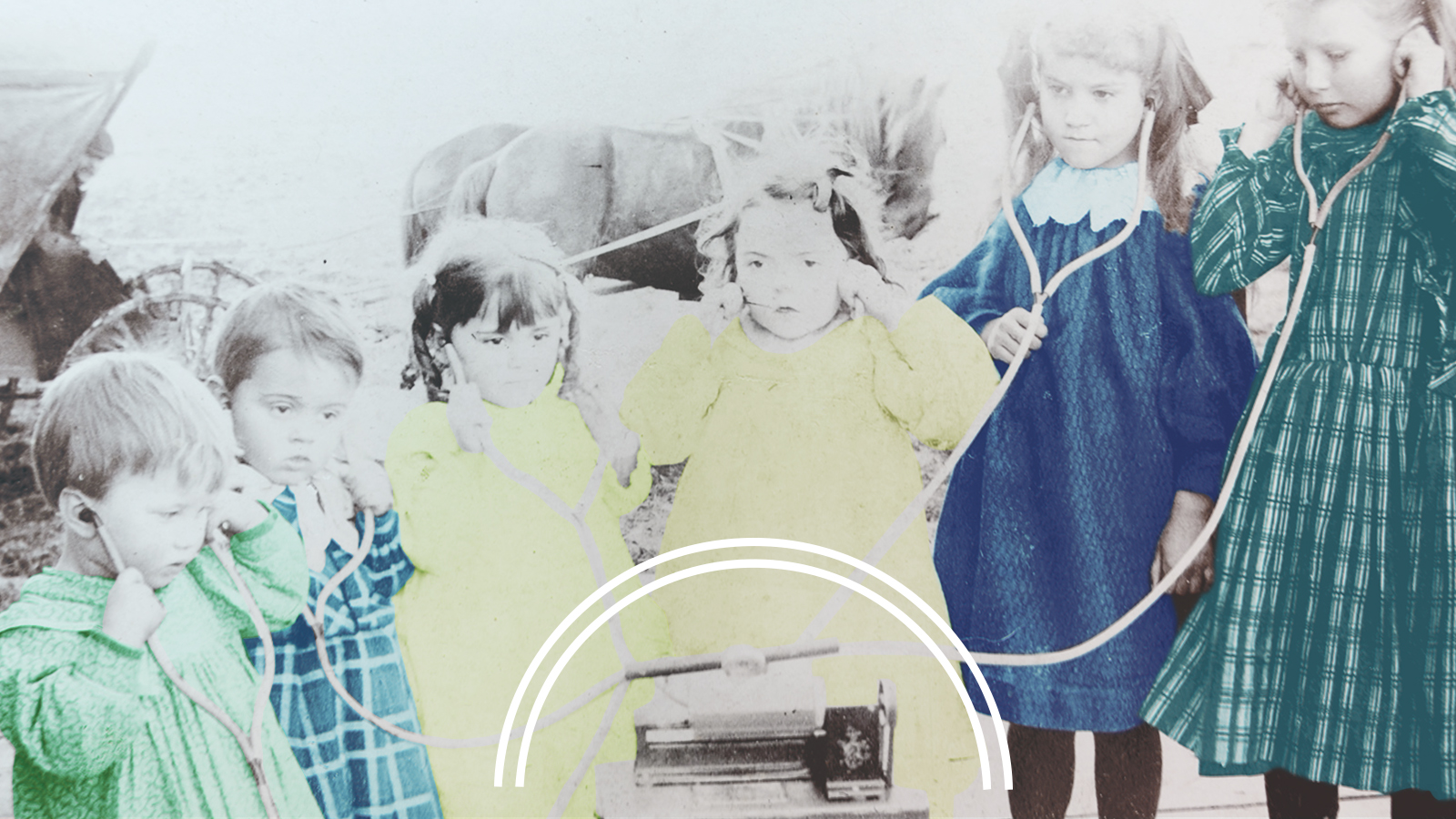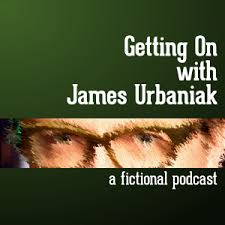Within the Wires
The first thing you need to understand about Within the Wires is that you won’t understand it--at least not for a while. The serialized fiction podcast is a production of Night Vale Presents, the same team that created Welcome to Night Vale and Alice Isn’t Dead. Like these titles, Within the Wires trades on an odd and enigmatic style, relying on listeners to locate the threads as the story unspools.
Structured as a series of guided meditation tapes (known as “Relaxation Cassettes,” the name of the first season) voiced by co-writer Janina Matthewson, it would be easy to get tricked into believing this is an actual meditation podcast. In fact, judging by many iTunes reviews left for the show, this is not an uncommon mistake. A closer listen, however, reveals that hidden within these tapes are the details of a strange and unsettling reality. References to “The Institute” and surveillance abound, leaving listeners to wonder where exactly we are--and, more to the point, who we are.
The story is parceled out slowly, which can frustrate listeners accustomed to a more linear plot. Where traditional public radio is built on the repetitious “Here is what I will tell you, Here is what I am telling you, Here is what I told you” model, Within the Wires prefers to instead drop breadcrumbs down long and dark corridors, making listeners wait for the lights to come on. It’s the kind of fertile storytelling from which subreddits propagate and grow. The same people obsessed with Lost’s Smoke Monster will clamor to understand who the oblique caretakers are in Within the Wires.
Though Within the Wires bears a passing resemblance to the mysterious world of J.J. Abrams’ Lost, it is far more tightly and carefully crafted. (Put down your pitchforks, Lost fans. It’s true.). A better comparison can be made to the work of filmmaker David Lynch, to which Welcome to Night Vale has often and aptly been compared in the cryptic, hypnagogic way the show doles out its details, as well as its sinister overtones. Within the Wires writers Jeffrey Cranor and Matthewson ask their listeners to pay attention, to assume nothing, and to trust them--they know what they’re doing.
But while the story demands a certain level of patience, like a Donald Barthelme short story, it teaches its listener how to consume it. Fragmented details pile up, haunting motifs emerge (“You are probably alone”; “You are definitely alone this time”), and characters are introduced. Slowly an ominous plot comes into focus, made all the more disquieting by Matthewson’s sensational voice acting which manages to be both warmly soothing and menacing, often within one sentence.
A curious point of note is the show’s meta approach to storytelling. Like other Night Vale Presents’ productions, the audio medium is built into the story and used as a frame for the podcast. In other words, the entire show is structured around the meditation tapes, much in the same way Welcome to Night Vale relies on the fictional radio broadcasts to tell its story and Alice Isn’t Dead uses CB radio communication. It’s a convenient structure for a fiction podcast as producers don’t need to worry about adapting print conventions and risk resembling a chapter from an audio book. However, it would be interesting to see future Night Vale Presents productions let go of the dock and swim out into the deep waters of audio dramas with rich scenes and dynamic dialogue.
That said, Within the Wires works as well as it does because it confines us to the universe of these cassettes, and we must conceive of this strange place from our limited vantage point. A spate of surrealist mystery podcasts have cropped up over the past couple of years, and fans of those will reliably flock to Within the Wires. However, the reach of Cranor and Matthewson’s project should extend beyond these niche audiences, due in no small way to the show’s strong writing and sterling production which outshines most of its contemporaries. The lyricism and atmosphere of episode one’s Side B alone earns the show its bona fides as a tremendous piece of audio fiction.
Five Questions with Jeffrey Cranor
1. Podcasters often gravitate toward the nonfiction genre, no doubt due in part to public radio’s influence on the genre. With two fiction podcasts under your belt—and three in the stable of Night Vale Presents —you seem to be firmly planted in the fiction camp. Why have you chosen to create fiction?
I have characters and worlds in my head I want to write about and broad thoughts about life and love that I want to explore. You can do those things with non-fiction, definitely, but I'm less good at that. I was a journalism major, but I leaned away from research and fact-checking, which made me a terrible journalist. Stories interested me more, and being able to create my own world, with its own rules and continuity, seemed way more fun.
Having said all that, I'm now in a position with Within the Wires (and with Welcome to Night Vale) where I have to do research and fact-checking within our own fictions to make sure we remain consistent with the rules we set out. So you can never really escape that part of writing, but at any point I can invent a new character, a new action. The joy has been making unbelievable universes believable.
2. Tell me about the decision to base the story of Within the Wires around a series of meditation tapes rather than a more straightforward, traditional narrative. What did you feel like it would or could convey that another form would not?
My wife Jillian Sweeney is a dancer/choreographer. We’ve collaborated on a few shows together. The last one was Vulture-Wally, which was a performative deconstruction of the 19th century Austrian serial novel of the same name (Geier-Wally, auf Deutsch).
In a nutshell, the book was about a young woman who falls in love with a bear hunter, who turns out to be a total dick. She doesn’t want to follow cultural expectations (mostly set out by her father), so she leaves home and lives on her own with a vulture friend.
We broke our show up into chapters, each one named after a body part. We felt like Wally’s body was the idea around which to structure our performance, as we felt the focal point of most oppression begins with misinterpreting a body as an object. (I really thought this worked well, and I used this body-part titling motif for Within the Wires episodes as well.)
One of the chapters of our show was a patterned walking dance for four. It was rhythmic and deliberate, practiced and soothing. Rather than lean into the rhythm with music, we created a poem titled “Plant Your Feet, Wanderer.” At the time, I was really obsessed with relaxation tapes and techniques: the soothing voice, the implication of subliminal messaging in older recordings, the abstract concepts presented in such an instructional format.
So we played the poem (I read it in the style of a relaxation cassette) on a small tape recorder, and it really worked (I think) well in the piece. (here’s a video clip of it, if you’re interested: )
This style of poetry really stuck with me, so ethereal and limited in narrative, filled with visualizations and some dream-logic, and I wanted to develop a story in the guise of a relaxation cassette. So I approached my writer friend, Janina Matthewson, earlier this year about it, and we came up with this crazy story which is now the podcast.
3. What sort of art influences your creations? Do you draw inspiration from other artists—both generally and for Within the Wires?
I definitely draw inspiration from other artists. Theater/dance artists like 600 Highwaymen, Young Jean Lee, the Neo-Futurists and Chunky Move; Novelists like Aimee Bender, Italo Calvino, Helen DeWitt, and Toni Morrison; TV and film artists like David Lynch, Luis Buñuel, Roy Andersson, and Yorgos Lanthimos.
My favorite film of all time is Du Levande (You, the Living) by Swedish filmmaker Roy Andersson. Each of his films follows a series of day-in-the-life moments, each one common and relatable (like unrequited love, a noisy apartment neighbor, waiting in line at a government registry, etc.) and simultaneously surreal and gorgeous (passengers singing choir-like on the subway, 18th Century military enters a modern bar to get a glass of water for their king). Each of these artists bends tropes, subverts narrative expectations, keeps me on my toes. I am always attempting to do that when I create.
There's a well-worn copy of Alice's Adventures in Wonderland/Through the Looking-Glass somewhere in my mom's house. I read that thing at least a dozen times as a child and as an adult. The book makes perfect sense but follows a dream-logic, and Alice just sort of accepts it as reality, however strange. It is a dream after all (spoiler), and she lacks the same real-life lucidity most of us lack during sleep.
The dream revelation was always my least favorite part of the book, not only because that feels cheap and hacky by today’s standards, but also because it provides The Answer to why this world was the way it was. My love of that book had to do with the adventure, the nonstop unknowing of what was next. The sheep is suddenly in a boat. Flamingos are croquet mallets. Don’t explain why. It undermines the magician to be told how they do their tricks.
Exploring mysteries has always been more interesting to me than solving them. Finding clues, discovering something that ruins your solid theory, trying to find the perpetrator. Red Herrings and Macguffins. I enjoy art that drops hints that something is amiss in reality. Think Twin Peaks, or ABC's Lost. Both of these shows were at their finest when they were expanding on bizarre realms. Both fell apart when they tried to create logical explanations for why these realms could exist in reality.
One of my favorite jokes of all time was on The Simpsons. There's a scene cut to the TV, and the news anchor Kent Brockman is in mid-sentence saying "...thus leaving the Vice President in charge."
4. You come from a theater background where you write and direct for the stage. For you, how different is writing and directing for a podcast? In what ways do the skills translate and how have you had to develop and adapt your skills to create podcasts?
The creation of theater and podcasts are quite a bit different, procedurally because the podcast is ever-present, available everywhere, all the time. It is passive for both audience and creator, because it cannot interact. We write episodes to be self-contained but also to lead to the next piece and in a way where people could listen one at a time or binge all at once (when the season finishes). Podcasts are always on-call.
But creation of theater and podcasts can be similar in general approach. With theater, I am always aware that the audience is present. I try to always make the audience aware of that, too. I like speaking directly to them, moving them about, bringing them into the performance. I like doing all of these things in a way that is inclusive and safe, but I also want to push the audience’s discomfort. I don’t want them sitting respectfully and complacently in the dark watching a play or a dance piece the way they might look into a fish tank – delicately admiring the visuals and refraining from tapping on the glass.
With Within the Wires, I want the listener to be a character, to play the part of the person who has been given these relaxation cassettes. I want them to breathe and to feel their body. It’s impossible to truly do this without being in the room with them, because there’s no urgency for a podcast listener to do what the podcast host tells them to do. And that’s fine, too. We wrote with that in mind.
In Within the Wires, Janina (also a theater maker) and I have kept at the front of our minds “How will this be received? What do we want the listener to feel/think/do? How will this be received bodily?” Within the Wires has been a theatrical experiment for us as well as an attempt at fiction podcasting.
5. Describe the process of creating Within the Wires. You co-wrote the first season with Janina Matthewson—who is fantastic as the narrator, by the way. Was this a project she came to you with or that you approached her with or did you conceive of it together? Was it similar in terms of process as co-writing Welcome to Night Vale with Joseph Fink or was this an entirely different beast?
I came to Janina with the idea. I had only met Janina once before I asked her to co-write this show. In early 2015, I was at Amherst Books in Massachusetts, and they had a Staff Recommends table. Janina’s 2014 novel Of Things Gone Astray was there. It had a beautiful cover, so I read the first chapter, and loved it.
I read that book on our spring Night Vale live show tour and then wrote about it on my blog, telling everyone to go read this thing. The story is magical and emotional and so clearly written. It was the type of surreal yet emotionally-grounded writing I’m always trying to achieve.
When Night Vale toured to the UK later that fall (Janina lives in London), I invited her to our show and she joined us all for drinks after. We chatted for about half an hour or so. I thought she was funny and intelligent and not a serial killer, so when I set out to create Within the Wires, I asked her to co-write it with me. She is still funny and intelligent and not a serial killer. Plus she’s an excellent writer and writing partner.
Janina and I have modeled our collaboration off the way Joseph and I co-write Night Vale, which is we make an outline of every episode first. We create that outline together and then we divvy up the episodes. One of us writes one, the other edits it. We both have our hands on every word, and we can find a seamless central voice of the show that is not quite either of our individual voices.
It’s only different from Night Vale in that Within the Wires is constructed in 10-episode seasons, so it’s less sprawling than Night Vale. Within the Wires needs a beginning, middle, and end over the course of a limited number of episodes, whereas in Night Vale, we have beginnings, middles, and ends, too, but since it’s an ongoing serial, we tell those stories without a specific limitation of time or space.






